Are you considering a project budget reallocation but unsure how to approach it? Crafting a well-structured letter can make all the difference in communicating your needs effectively. In this article, we'll explore essential elements to include in your request, ensuring clarity and professionalism throughout. So, let's dive in and discover how to create a compelling budget reallocation letter that garners the approval you need!

Purpose and justification for reallocation
A project budget reallocation request typically aims to address unforeseen circumstances requiring financial adjustments. In this instance, the purpose of the reallocation involves redirecting funds to critical areas needing additional resources. Specific justification might include unexpected increases in material costs, such as a 15% rise in construction supplies due to market fluctuations or additional labor hours required to meet project deadlines. For example, an unplanned site condition at the ABC construction site in Springfield necessitates an estimated $10,000 for remediation efforts. Such strategic reallocations ensure project continuity, adherence to timelines, and overall success, demonstrating prudent financial management and responsiveness to project demands.
Detailed breakdown of current budget vs. proposed changes
Requesting a project budget reallocation requires a clear understanding of the financial parameters involved. Current budget allocations, such as the initial $150,000 fund for resource development and operational costs, can be assessed against proposed changes like an additional $30,000 for marketing initiatives targeting the Q1 2024 launch. The existing budget breakdown includes key components: $80,000 for personnel expenses, $20,000 for software licenses, and $50,000 for equipment acquisitions. Proposed adjustments suggest redistributing $10,000 from personnel costs to enhance digital marketing efforts and shifting $20,000 from the equipment fund to invest in market research. This strategic reallocation aims to maximize project visibility and engagement, contributing significantly to projected outcomes.
Impact assessment on project deliverables and timelines
Impact assessment on project deliverables and timelines is essential for understanding how budget reallocations influence outcomes. Budget reallocations, typically necessitated by unexpected expenses or shifts in project scope, can significantly alter financial commitments. For instance, reallocating funds from personnel costs to unexpected material purchases can delay hiring timelines, impacting overall project delivery. Evaluating the implications of these changes on critical project milestones helps stakeholders identify risks associated with resource constraints. Timelines may extend if essential services or materials are delayed, ultimately affecting stakeholders' expectations and satisfaction. Frequent budget monitoring ensures alignment with project goals, allowing for timely adjustments and communication of potential impacts on deliverability.
Approval from relevant stakeholders or departments
A project budget reallocation request requires approval from relevant stakeholders or departments, ensuring transparency and alignment with organizational financial strategies. Comprehensive documentation detailing the specifics of the budget changes, including allocation amounts and justifications, is essential for stakeholder review. Key departments such as finance, project management, and operations must evaluate the implications of reallocation on existing financial plans and project timelines. This process often involves multiple meetings or discussions to gain consensus, with potential impacts on resource availability and project objectives being a major consideration. Proper approval fosters collaboration and accountability in managing organizational resources effectively.
Compliance with organizational financial policies and guidelines
Project budget reallocation requests often arise in response to unforeseen expenses or changes in project scope. A formal request typically references organizational financial policies and guidelines, ensuring that the proposed reallocation aligns with prescribed budgetary constraints. For instance, the lack of anticipated materials, such as specific software licenses or hardware upgrades, may necessitate adjustments. It is essential to provide a detailed breakdown of current budget allocations, including original funding amounts and the specific areas impacted, all while ensuring adherence to the organization's established financial governance for transparency and accountability. Additionally, justification for the changes should reflect the overall objectives of the project, highlighting benefits such as improved efficiency or enhanced outcomes.
Letter Template For Project Budget Reallocation Request Samples
Letter template of project budget reallocation request for unexpected expenses
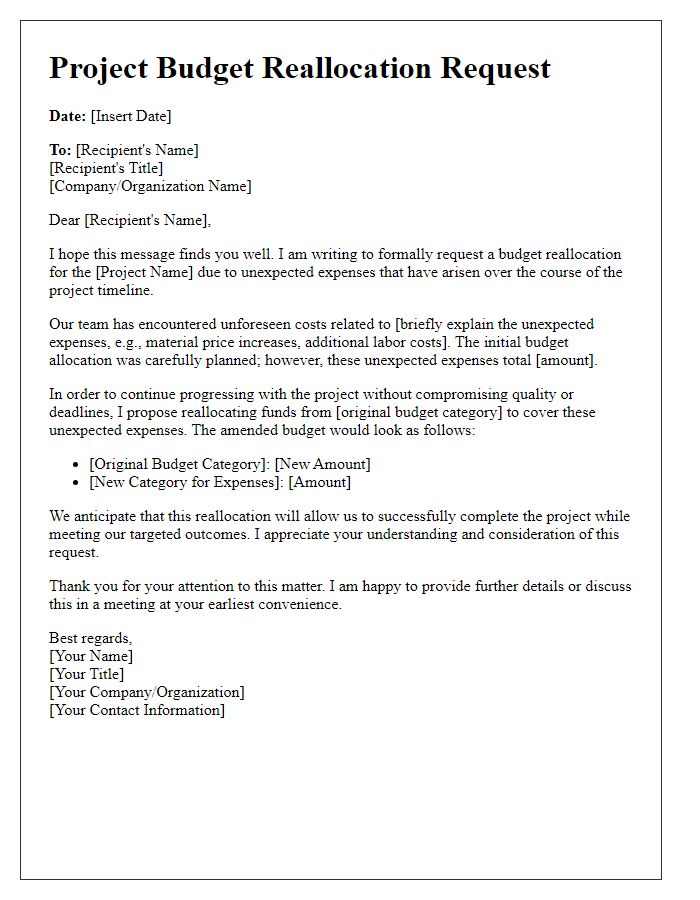
Letter template of project budget reallocation request for resource optimization
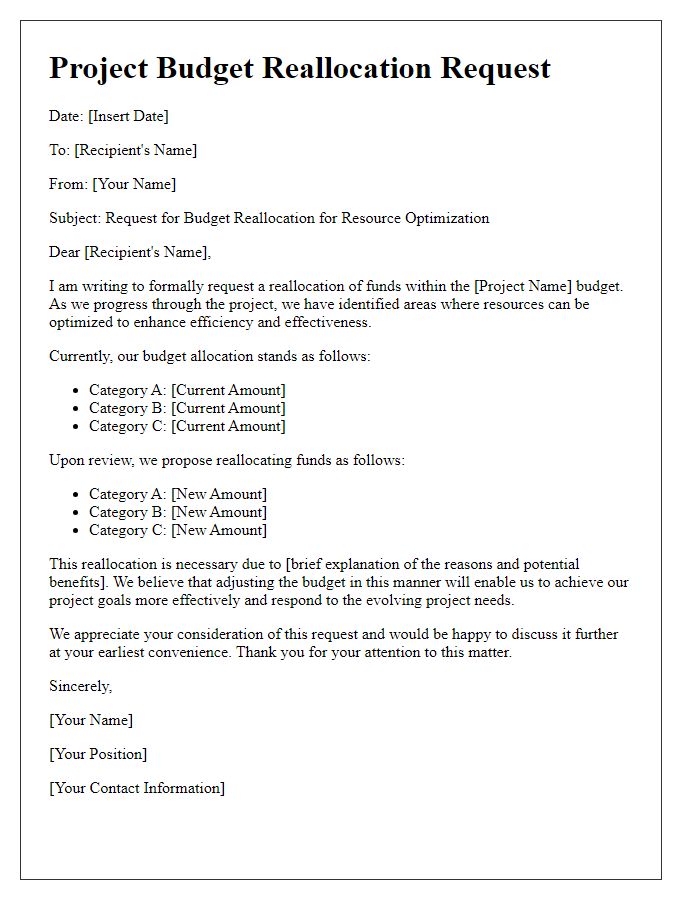
Letter template of project budget reallocation request for new project opportunities
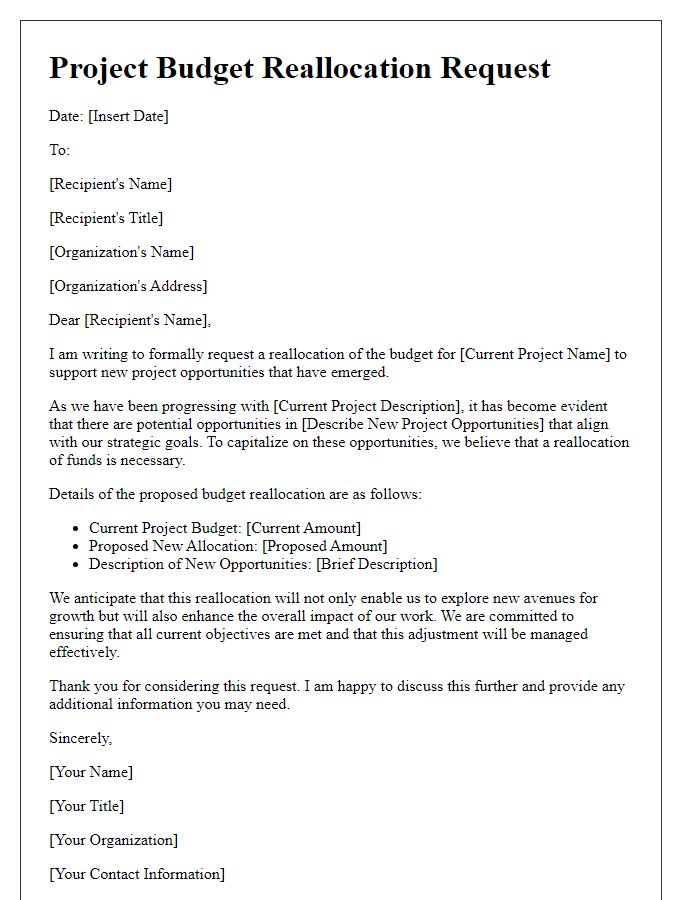
Letter template of project budget reallocation request for team restructuring
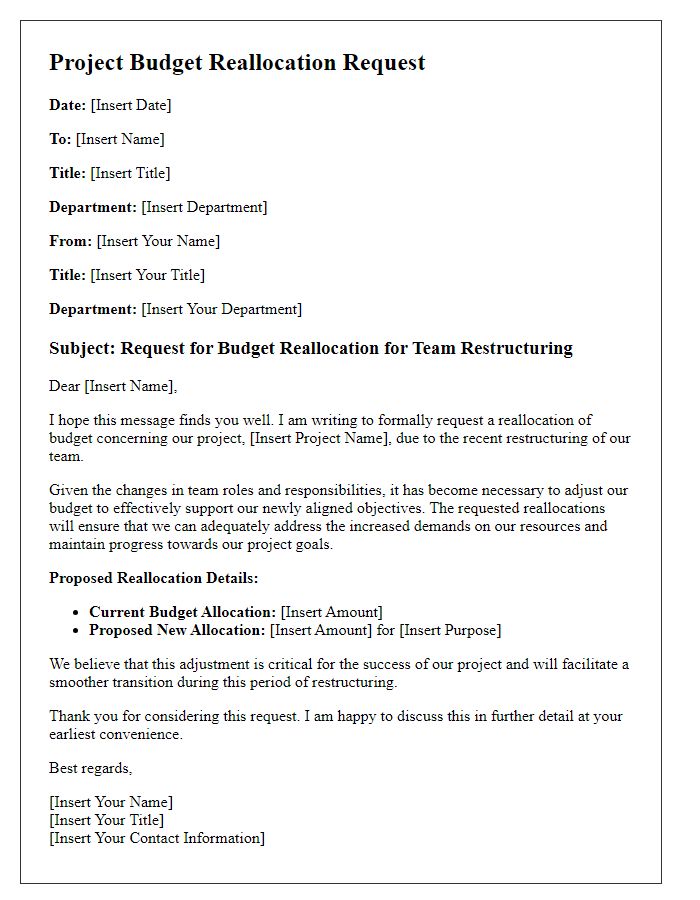
Letter template of project budget reallocation request for additional funding requirements
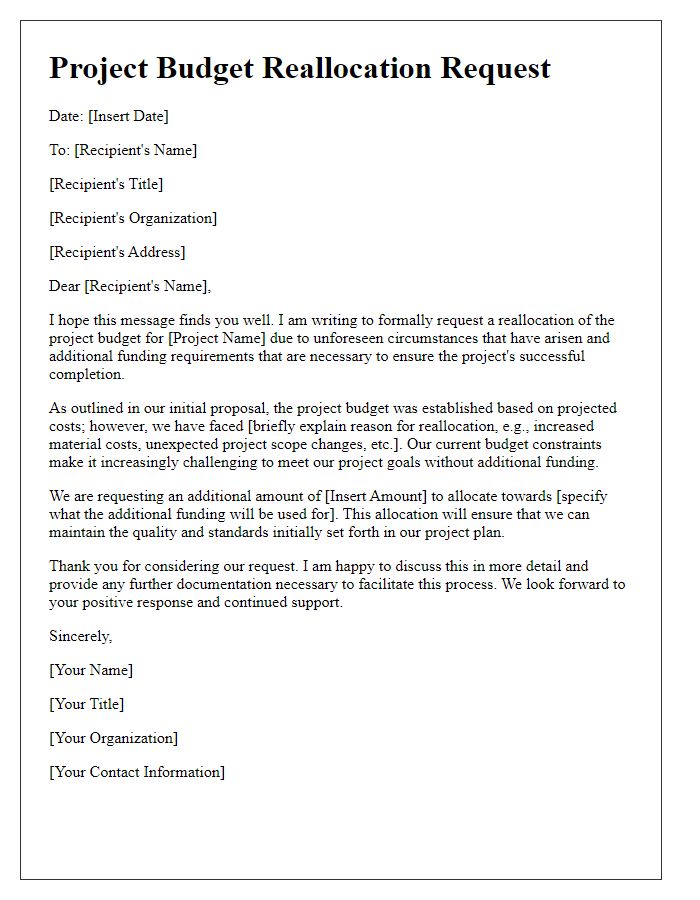
Letter template of project budget reallocation request for timeline adjustments

Letter template of project budget reallocation request for technology upgrades
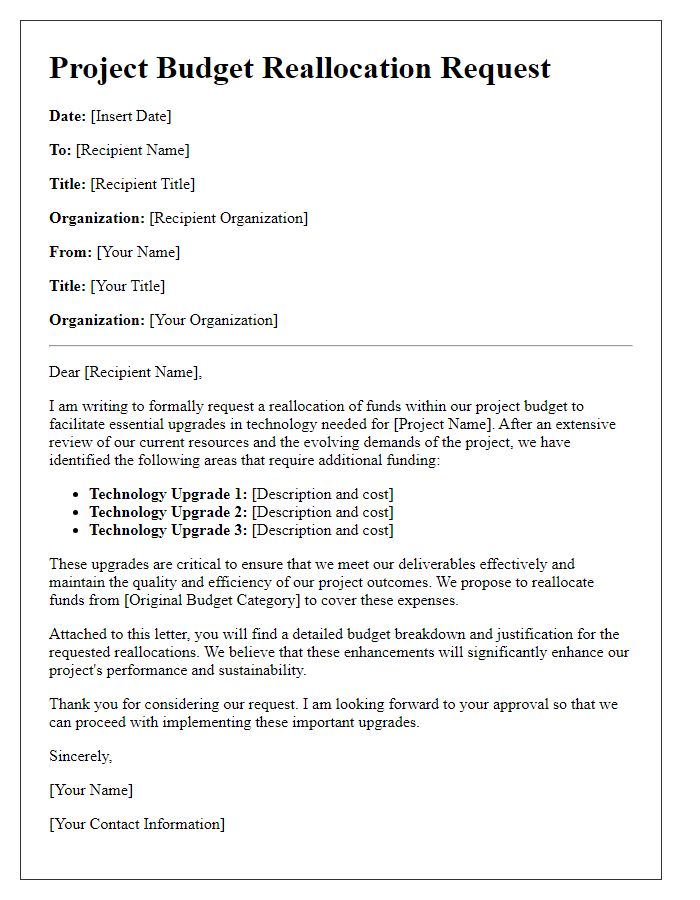
Letter template of project budget reallocation request for stakeholder changes
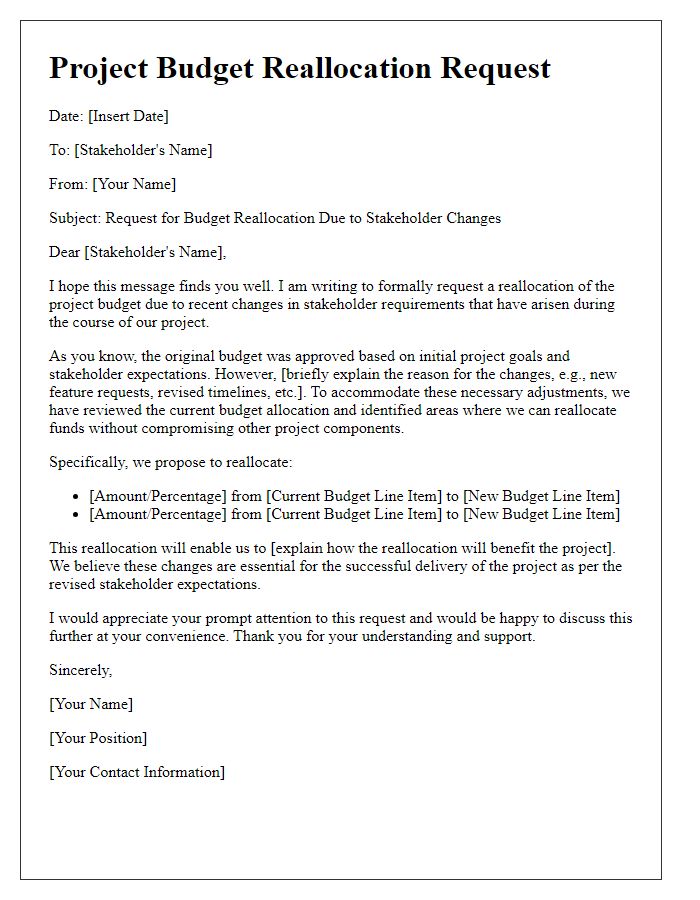
Letter template of project budget reallocation request for performance enhancements


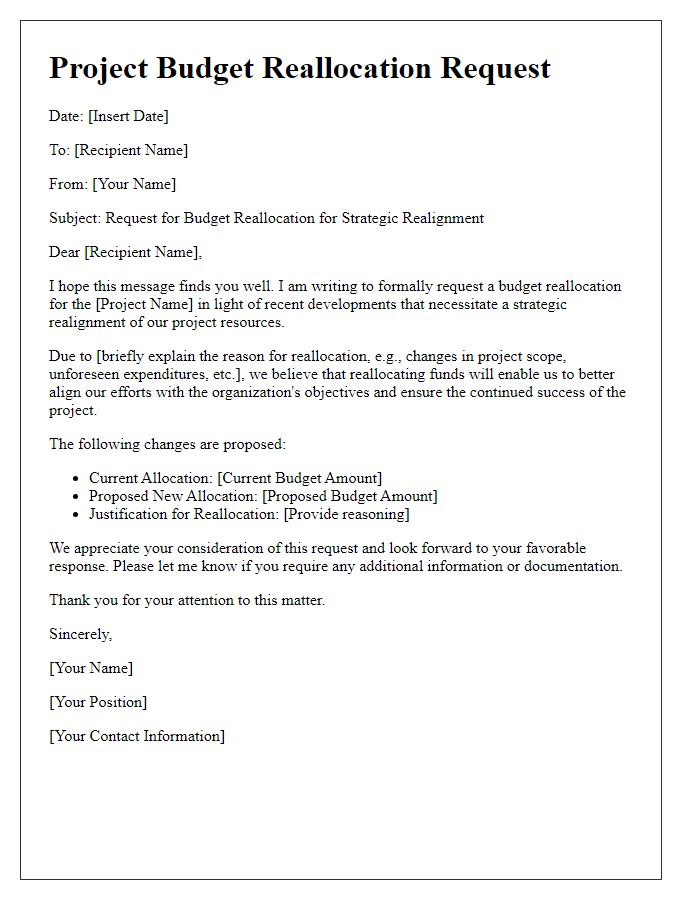


Comments